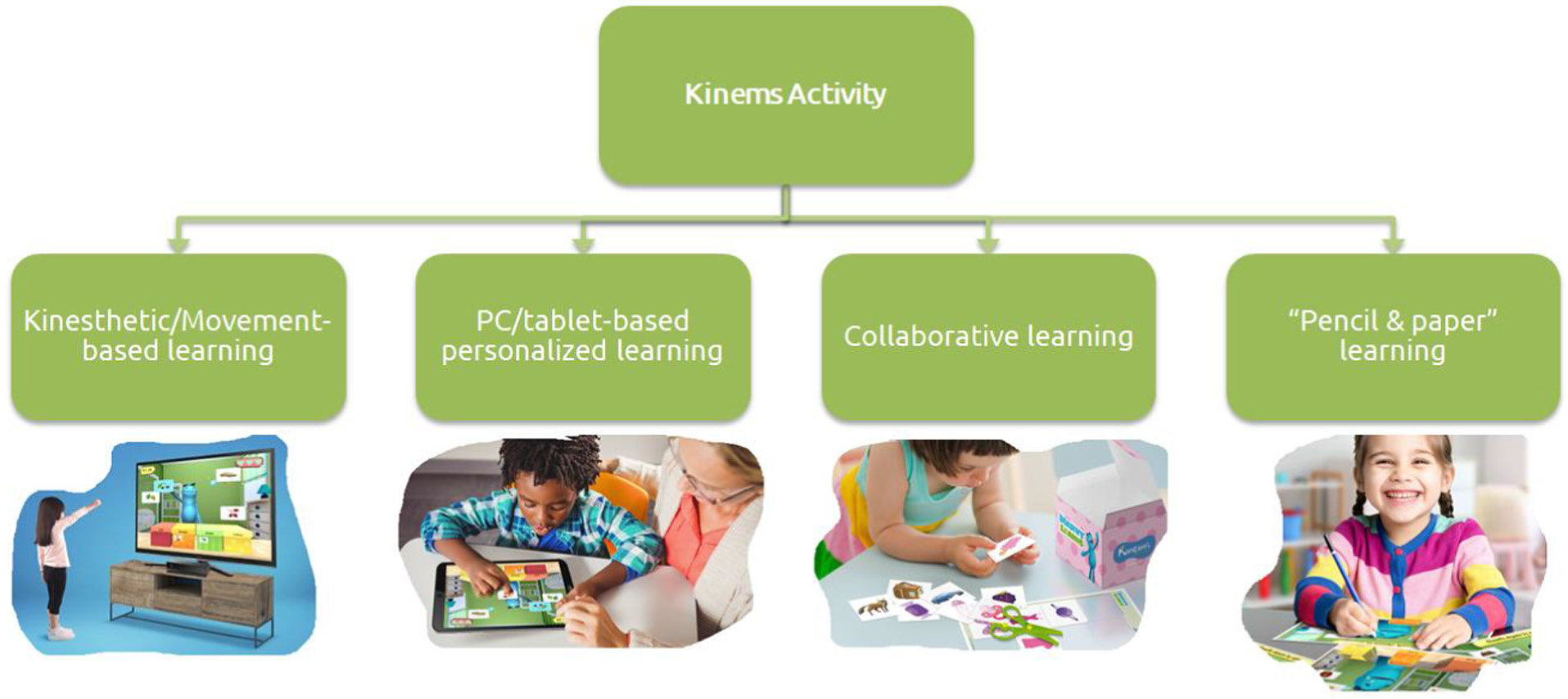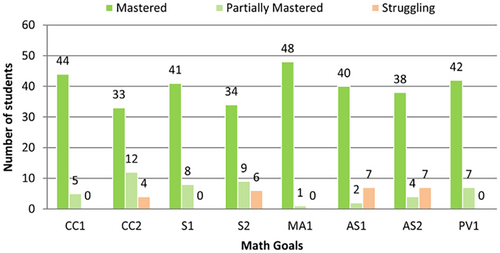Kinems Proves Effective in Enhancing Early Childhood Education: A Published Study in a Leading Peer-Reviewed Journal
 We are excited to share that the Kinems learning platform has been the focus of a rigorous efficacy research study, now published in the prestigious British Journal of Educational Technology [1]. This peer-reviewed study highlights the effectiveness of Kinems as a core curriculum tool in kindergarten classrooms, demonstrating its potential to transform early childhood education through movement-based learning.
We are excited to share that the Kinems learning platform has been the focus of a rigorous efficacy research study, now published in the prestigious British Journal of Educational Technology [1]. This peer-reviewed study highlights the effectiveness of Kinems as a core curriculum tool in kindergarten classrooms, demonstrating its potential to transform early childhood education through movement-based learning.
In recent years, digital technologies have revolutionized early childhood education, fostering dynamic and immersive learning environments. It seems that the uniqueness of the Kinems multimodal movement-based learning platform that stands out for their ability to merge physical activity with educational content, is making learning both engaging and effective.
The Rise of Immersive Technologies in Education
Immersive technologies, which include augmented reality (AR), and mixed reality (MR) using AI technologies, have become increasingly popular in K-12 education. These tools create interactive learning experiences that enhance students' spatial and problem-solving skills, collaboration, and engagement. Movement-based learning games, a subset of these technologies, use body movements to interact with digital content in an immersive environment, offering a hands-on learning experience that connects students with educational material on a deeper level.
While the benefits of immersive technologies are well-documented, integrating them effectively into traditional classroom settings remains a challenge. Successful incorporation requires careful planning and a solid pedagogical framework that aligns with the educational goals of the curriculum. This is especially true in kindergarten classrooms and inclusion settings, where the developmental needs of young children must be carefully considered.
A Systematic Learning Design Approach for using Kinems as a curriculum tool
To address the aforementioned challenge of educational tools integration in classroom teaching, a systematic learning design approach was developed and tested rigrously in a case study involving three kindergarten teachers and 49 students. The Kinems-enabled learning interventions occurred weekly over 28 weeks in two kindergarten classrooms of a private school, lasting 60–90 minutes each. During the intervention, students were divided and worked in mixed-ability groups of 4–5 students.
The approach aimed to integrate Kinems multimodal movement-based learning gaming platform into the daily curriculum as a core educational/curriculum tool, rather than a supplemental activity. Over the course of a full school year, the teachers used the Kinems platform, which is specifically designed for PreK-5 students, to teach fundamental mathematical concepts.
The Kinems platform leverages AI powered movement-based technology, primarily utilizing the any depth sensor or web camera, to create mixed-reality learning experiences. By using gesture recognition technology, students interact with the educational content through physical movements, receiving real-time feedback in the form of visual or auditory cues. In addition, the Kinems platform offers significant added value through its use of multiple representations via touchless and touch interaction modalities, providing students with diverse ways to engage with academic content. Thus, by combining touchless and touch interaction modalities using 1-1 devices (tablets/chromebooks, etc) or interactive boards and tables as well as printables & cut-glew card games, Kinems enhances learning experiences and accommodates various learning and teaching needs. This multimodal approach not only reinforces concepts but also promotes deeper understanding and retention, especially for students with special educational needs and learning difficulties.
These multiple modes of interaction ensure that students can connect with the material in a personalized and meaningful way, driving better outcomes in academic, cognitive social-emotional and motor skills development.
Study results: Positive Outcomes Across Multiple Dimensions
The results of this efficacy reseacth study were highly positive. The use of Kinems patform as a curriculum tool led to significant improvements in students' overall academic performance, particularly in critical mathematical skills.
The percentages of improvement, as assessed through various statistical measures and pre/post tests, indicate significant positive impacts across several areas of student performance. For instance,
- By examining the relationship between accuracy scores and reaction time, it was found that most students had either fully mastered (accuracy score of 80% or above) or partially mastered (accuracy score between 50% and 80%) the assigned math goals, with only a few students struggling and in most goals, none at all
- The summative math test results revealed that most students displayed excellent or very good knowledge in the respective units by the end of the academic year
- A statistically significant increase was observed in the students' mathematical problem-solving abilities when comparing the pre & post tests (2.98 ± 0.84 vs. 3.68 ± 0.41; p < 0.001). The effect size for this improvement was 0.89, signifying a large effect size.
- Similarly, for geometry skills, students demonstrated significant improvement, with shape recognition scores increasing from 3.75 to 4.00 out of 4. After the intervention, all students correctly identified all shapes, marking a noteworthy improvement from the pre-test results, where a portion of the students had limited or moderate recognition capabilities
 Beyond academic achievement, this Kinems enabled learning approach also had a positive impact on students' cognitive development, social-emotional growth, and engagement levels.
Beyond academic achievement, this Kinems enabled learning approach also had a positive impact on students' cognitive development, social-emotional growth, and engagement levels.
Teachers positive feedback
Teachers involved in the study reported a positive attitude towards the integration of movement-based games, finding the approach beneficial for student learning. They emphasized the importance of thoughtful design in creating immersive learning experiences that keep students motivated and engaged. Here are some key points reflecting teachers' opinions from the study:
- Positive Engagement: Teachers observed that the use of Kinems games led to increased student engagement and motivation, with students showing excitement and enthusiasm during the activities.
- Ease of Integration: Educators found the Kinems platform easy to integrate into daily classroom routines and appreciated how the games complemented traditional teaching methods.
- Support for Diverse Learners: Teachers noted that the multimodal approach of Kinems was particularly beneficial for students with special educational needs, helping them stay focused and improving their participation in class activities.
- Behavioral Improvements: Teachers reported that students exhibited better classroom behavior, including enhanced attention spans and collaboration spirit as well as reduced disruptive behavior, when engaged in Kinems activities.
- Practical Application: Educators felt that the platform provided valuable hands-on experiences that made learning more concrete and accessible, particularly in developing motor and cognitive skills simultaneously.
Implications for Practice and Policy
The success of this systematic learning design approach has several implications for both practice and policy in early childhood education:
For Educators: In-service kindergarten and primary school teachers can adopt this Kinems-based approach to seamlessly integrate immersive technologies into their daily lessons. This ensures consistent use of these technologies throughout the school year, providing continuous and engaging learning experiences.
For School Administrators: Administrators can develop training programs for both pre-service and in-service teachers, focusing on understanding and managing Kinems immersive technologies in large classrooms. Additionally, they can use Kinems platform features to monitor and assess the impact of these technologies on student outcomes.
For Special Education Leaders: The flexibility of touchless intraction via movement-based game-based learning activities along with multimodal touch interaction (via 1-1 deviced and printables) makes them particularly useful in special education settings. Teachers can adjust the difficulty level, pace, and type of interaction to meet the individual needs of students with special needs, fostering an inclusive learning environment.
Closing remarks
The integration of the Kinems learning platform as a curriculum tool into kindergarten classrooms represents a significant step forward in early childhood education. This platform creates immersive learning experiences that engage young learners and support their academic and personal development. As this study shows, with careful planning and a systematic approach, multimodal learning including movement-based touchless interaction can be effectively integrated into the core curriculum, benefiting both students and teachers alike.
Reference
- Aloizou, V., Linardatou, S., Boloudakis, M., & Retalis, S. (2024). Integrating a movement-based learning platform as core curriculum tool in kindergarten classrooms. British Journal of Educational Technology, 00, 1–27. https://doi.org/10.1111/bjet.13511